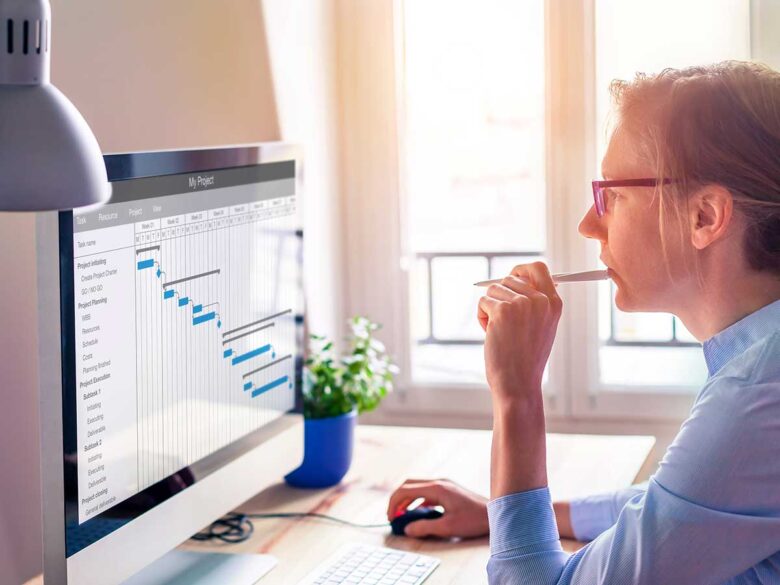The hedge fund industry is a fiercely competitive space, with managers always on the lookout for ways to enhance their performance and gain an edge over their competitors. One area that has become increasingly vital in recent years is data and analytics. Hedge fund analytics provide valuable insights into market trends, portfolio performance, and risk management. To gather hedge fund performance and regulatory filing data, investors and managers can use various tools and resources available.
To leverage data and analytics, the first step is to collect and manage data. Ensuring data quality and accuracy is critical since poor quality data can lead to erroneous analysis and investment decisions. Managers can establish clear protocols for data collection, validation, and storage to ensure data quality. They can also invest in data management systems that can handle large volumes of data and support advanced analytics.

Source: peoplematters.in
Collecting and managing data efficiently involves several best practices, including establishing clear protocols for data collection, validation, and storage, using data management systems that can handle large volumes of data, and relying on hedge fund databases to store and organize data for easy access and analysis. Many tools and resources are available for collecting and managing data, which can ingest external fact sheets and provide users with access to complete and up-to-date regulatory and performance data.
After collecting and managing data, the next step is to analyze and model it to extract insights. Various analysis and modeling techniques, such as statistical analysis, machine learning, and artificial intelligence, can be used to identify patterns and trends in the data. Software allows users to create customized charts and tables with data on the platform, and users can also download custom fact sheets from the platform.
Data and analytics are becoming increasingly vital in the hedge fund industry. Collecting and managing data efficiently and leveraging advanced analytics can provide valuable insights into market trends, portfolio performance, and risk management, enabling managers to make better investment decisions.
Importance of Advanced Analytics and Machine Learning

Source: mid-day.com
Advanced analytics and machine learning techniques can provide valuable insights that may not be visible through traditional methods. These techniques can be used to identify patterns and trends in the data that are not immediately obvious. They can also be used to build predictive models that can forecast future market conditions. By incorporating advanced analytics and machine learning into their investment process, managers can gain a more comprehensive understanding of the markets and identify new opportunities.
Best Practices for Data Analysis and Modeling
These are two essential components of successful investing. When performing data analysis, managers should focus on the most important factors – such as interest rates, inflation, and economic indicators – that will have a direct impact on their investments. They should also look for patterns in the data that could indicate potential opportunities or risks.
Use a variety of analysis techniques to gain a comprehensive understanding of the data.
Incorporate advanced analytics and machine learning techniques to identify patterns and trends that may not be visible through traditional methods.
Build predictive models to forecast future market conditions.
Regularly review and update the processes to ensure they are keeping pace with changes in the market and industry.
Portfolio Optimization and Risk Management

Source: acuityppm.com
Data and analytics can also be used to optimize portfolio construction and manage risk. By analyzing historical market data and building predictive models, managers can identify patterns and trends that can inform their investment decisions. They can also use portfolio optimization techniques to construct portfolios that are well-diversified and have a low level of risk.
Importance of Risk Management
Risk management is critical in the hedge fund industry, as it can help managers avoid significant losses and protect their investors’ capital. By analyzing historical market data and building predictive models, managers can identify potential risks and take steps to mitigate them. This can include diversifying portfolios, using derivatives to hedge positions, and implementing stop-loss orders to limit potential losses.
Real-Time Monitoring and Execution

Source: climb.pcc.edu
Data and analytics can also be used to improve real-time monitoring and execution. By using real-time market data, managers can make more informed investment decisions and take advantage of opportunities as they arise. They can also use data and analytics to improve the execution of trades by identifying the best venues to trade and optimizing the timing of trades.
Best Practices for Real-Time Monitoring and Execution

Source: cpacanada.ca
To get the most out of real-time monitoring and execution, managers should adhere to a few key best practices.
Use real-time market data to make more informed investment decisions and take advantage of opportunities as they arise.
Use data and analytics to identify the best venues to trade and optimize the timing of trades. This can help you minimize transaction costs and maximize returns.
Regularly review and update real-time monitoring and execution processes to ensure they are keeping pace with changes in the market and industry.
Data and analytics play a critical role in the hedge fund industry. By using data and analytics to inform investment decisions, optimize portfolio construction, and manage risk, managers can improve performance and gain an edge over their peers. By leveraging the power of data and analytics, hedge fund managers can stay ahead of the curve and make better investment decisions.
A hedge fund database like RADiENT can also play a critical role in organizing and analyzing the data effectively, making the data more actionable and useful for managers. The hedge fund industry is highly competitive, and managers are constantly looking for ways to improve performance. Investing in data and analytics is a crucial step in achieving this goal.
With the right data and analytics tools, managers can quickly identify trends in the market, track their investments over time, and evaluate opportunities for investment.




